Baraebong Peak (바래봉)
34639 2024-04-07
196, Baraebong-gil, Namwon-si, Jeonbuk-do
+82-63-630-8900
Baraebong Peak gets its name from its resemblance to an upside down barittae (a wooden rice bowl used by temple priests). The mountain is characterized by round slopes and fields of royal azalea flowers in spring. Trekking starts at Yongsan Village, 1.5 kilometers away from Unbong-eup. The trail follows a gentle path through a forest reserve behind a ranch and up to the peak. The last section of the trail before reaching the summit is covered in royal azaleas in full bloom from late April until May. The view from the peak includes the whole vista of Jirisan Mountain.
Gucheondonggyegok Valley (구천동계곡)
15814 2024-04-07
159, Gucheondong 1-ro, Muju-gun, Jeonbuk-do
+82-63-322-3174
Gucheondonggyegok Valley is located within Deogyusan National Park approximately 25 kilometers from Rajetongmun Gate, the entrance of the valley. The valley is famous for its 33 scenic points including Sushimdae Cliff, Gucheonpokpo Falls and Yeonhwapokpo Falls. The valley is popular all year round with cool shade in summer, fall foliage in fall and a snowy landscape in winter.
Wido Island Chidori Village (위도 치도리마을)
5181 2024-04-07
Nalmatong-gil, Buan-gun, Jeonbuk-do
Located on Wido Island, Chidori Village is a small fishing community. Looking out to the sea from this scenic, peaceful village, one can view picturesque Ttanchido and Jageunttanchido Islands. When the tide recedes twice every day, a path opens up to connect Chidori Village to these islands. Along this path, oysters can be found in great abundance, and visitors are welcome to dig for them.
Eunpa Lake Park (Eunpa Recreation Area) (은파호수공원(은파국민관광지))
32949 2024-04-07
Miryong-dong, Gunsan-si, Jeonbuk-do
+82-63-454-4896
Located in Gunsan, Jeollabuk-do, Eunpa Lake Park was once a reservoir built before the Joseon dynasty that supplied water to nearby farms. The lake and its surrounding mountains were designated a national tourist site in 1985, but remain historically significant as they are featured on Daedongyeojido (Grand Map of Korea), a revered document developed by geographer Kim Jeong-ho. Known for its beauty at night, the lake was befittingly dubbed “Eunpa,” which means “silvery moonlit waves.”
Eupa Lake Park is full of natural beauty. The road that runs up from the park entrance is lined with cherry trees that create a breathtaking tunnel of pink flowers each spring. This stunning cherry blossom tunnel draws crowds of families and couples each year, particularly on the weekends. Mulbit Bridge, a landmark of the Eunpa tourist site, offers an impressive view of the Music Fountain and nightscape. At the park, you’ll also find an inline skating area, a waterfront stage, and a lotus flower garden.
Muju Gucheong-dong Special Tourist Zone (무주구천동관광특구)
19625 2024-04-07
Seolcheon-myeon, Muju-gun, Jeonbuk-do
+82-63-320-2114
At the heart of the Muju Gucheondong Special Tourist Zone is Muju Gucheondong Valley. The outer parts of Deogyusan National Park and the mountain’s natural recreation forest are also part of the special tourist zone.
The 30-kilometer-long Muju Gucheondong Valley is located to the north of Deogyusan National Park. The calm and soothing sound of the water flowing through a lush forest make this a great summer destination. The 33 scenic points of Gucheondong include Eunguam Rock, Haksodae Falls, Waryongdam Pond, Gucheon Waterfall and Yeonhwa Waterfall. In the summer, visitors can see the
rare sight of fireflies in their natural habitat. The fall foliage in autumn and the winter snowscape are also quite exquisite.
Within the vicinity of Muju Gucheondong is Muju Resort. The resort complex is made up of a family hotel, resort condominium and various recreational facilities where visitors can enjoy skiing, hiking, horseback riding and mountain biking. Visitors can take the gondola from the resort all the way up to Deogyusan Mountain’s Seolcheonbong Peak (1,520 meters). From, there, they can easily reach the summit at Hyangjeokbong Peak (1,614 meters).
Taekwondowon, located near the Muju Gucheondong Special Tourist Zone, offers a hands-on Taekwondo experience program. Those who are interested in learning Taekwondo can take part in a 1-day program which includes a Taekwondo demonstration, a Taekwondo class (basic movements), and board breaking.
[Muju Gucheondong Special Tourist Zone]
Areas Covered: Mupung-myeon (Samgoe-ri) and Seolcheon-myeon (Samgong-ri and Simgok-ri) in Muju-gun, Jeollabuk-do
Area size: 7,610,000 ㎡
Tourist Attractions: Deogyusan National Park, 33 Scenic Views of Muju, Gucheondong Valley, Muju Resort, forest park, Taekwondowon, Muju Hyanggyo (Confucian school), Baengnyeonsa Temple, Jeoksansanseong Fortress, etc.
Eunsusa Temple (은수사)
8659 2024-04-07
406, Maisannam-ro, Jinan-gun, Jeonbuk-do
+82-63-433-2502
The temple located upon Maisan Mountain was called Sangwonsa Temple during the early Joseon dynasty and was later known as Jeongmyeongam Hermitage. According to the Korean Language Society, the temple began to be called Eunsusa (meaning ‘Silver Water Temple’) after King Taejo (the founder of the Joseon dynasty) visited the temple and remarked that the water flowing nearby was as clean and smooth as pure silver.
The temple is home to the largest known Beopgo (Buddhist drum used for rituals), which was produced in 1982. A stone sculpture and a statue of Granny Samsin (a goddess that looks after babies’ births and keeps them healthy) also stand at the temple. However, the temple’s most treasured assets are its two Natural Monuments: Emerald Gaiety (a climbing vine, Natural Monument No. 380) and the Cheongsil Pear Tree (Natural Monument No. 386). Reverse icicles, though found all over the mountainsides, are most readily and abundantly found in the Eunsusa Temple area.
Uniram Baniramgyegok Valley (운일암 반일암 계곡)
39547 2024-04-07
1926, Dongsangjucheon-ro, Jucheon-myeon, Jinan-gun, Jeonbuk-do
+82-63-430-8382
Uniram Baniramgyegok Valley (5 km long) falls between Myeongdeokbong Peak and Myeongdobong Peak in the northeastern region of Mount Unjangsan. The name Uniram refers to the steep walls of the valley where nothing but the sky, rocks, thick forests, and clouds can be seen. The valley is also befittingly named Baniram since it is so deep that it only receives direct sunlight for half the day. There are many strangely-shaped rocks like Jjokduri Rock, Cheollyeop Rock, and Daebul Rock scattered throughout the lush valley. At the peak of summer, the area is crowded with vacationers and is also popular for its autumn leaves.
Wido Beach (위도해수욕장)
4422 2024-04-07
Jin-ri, Buan-gun, Jeonbuk-do
+82-63-580-3762
Opened in 1969, Wido Beach is known as an excellent swimming beach. The beach is sheltered by the surrounding mountains with fairly shallow and clear waters, making it very popular among families seeking a relaxing vacation. Moreover, the beach offers a spectacular view of Wangdeungdo Island from the shore.
Namwon Silsangsa Temple (실상사(남원))
8876 2024-04-07
94-129, Ipseok-gil, Namwon-si, Jeonbuk-do
+82-63-636-3031
Silsangsa Temple was constructed by Monk Jeunggak, as one of nine special temples in the year 828. The temple was established because of the theory of divination, based on topology. The belief held that Korea’s good spirit would be taken away to Japan, bringing bad luck if the temple was not constructed at this particular location. The temple was reconstructed in the 26th year of King Sukjong’s reign (1700) after it was completely destroyed during the Imjin War (1592-1598). However, it was almost burnt down in the 19th year of King Gojong’s reign (1882).
It is presently preserved just as it was during the Unified Silla Kingdom, with its three-story pagoda and its 11 treasures with a total of 17 cultural assets. The entrance of the temple lies in the middle of a rice field and the temple has a pastoral view, surrounded by trees. From the entrance, visitors can cross the half-moon shaped stone bridge to find a remarkable totem pole.
Jeonju Donggosa Temple (동고사 (전주))
12148 2024-04-07
103-100, Naksujeong 2-gil, Wansan-gu, Jeonju-si, Jeonbuk-do
+82-63-288-1626
Donggosa Temple, located on Seungamsan Mountain in Jeonju, is a Buddhist temple of the Taego Order. The hike up to Donggosa Temple is a refreshing climb, and the temple provides a stunning panoramic view of downtown Jeonju. The temple buildings were constructed one after another along the mountain ridge, and stand in a row on either side of Daeungjeon Hall. The temple is modest and tastefully decorated with portraits of deceased great Buddhist monks and wooden Buddhist murals. The hiking trail to the right of Donggosa Temple leads to Chimyeongjasan Martyrs Ground, which is the graveyard of persecuted Catholics from the late Joseon dynasty.
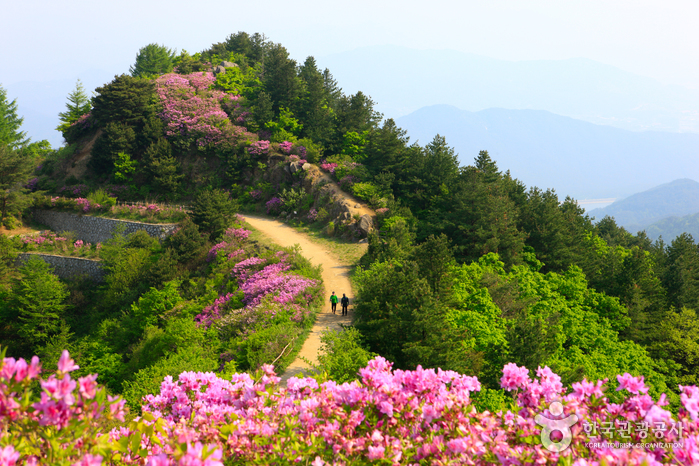
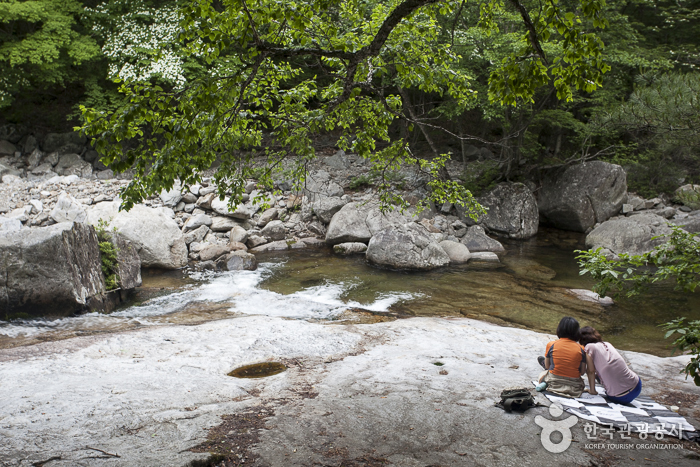

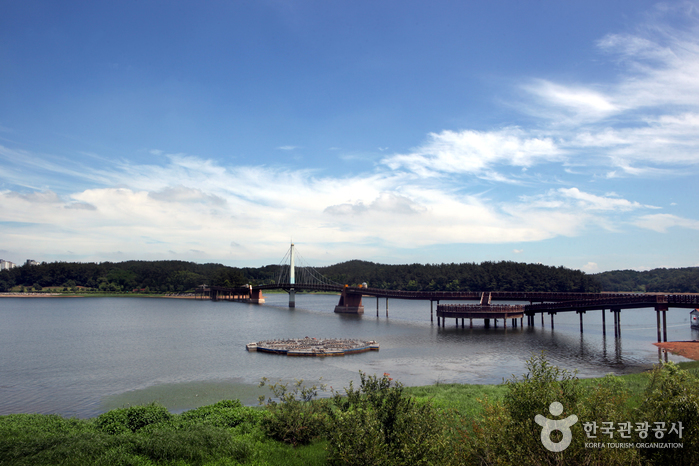
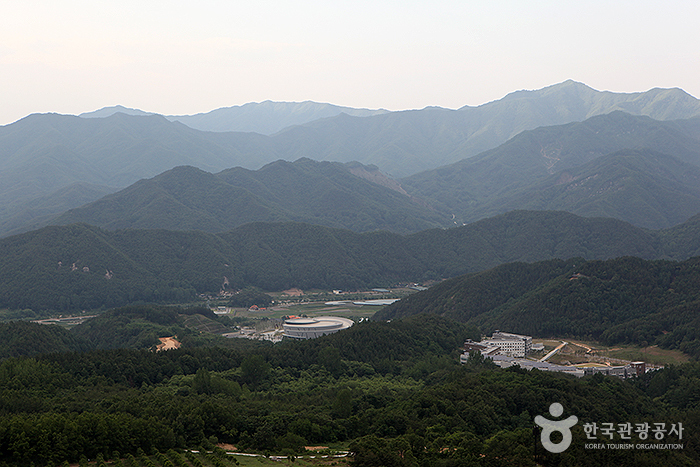
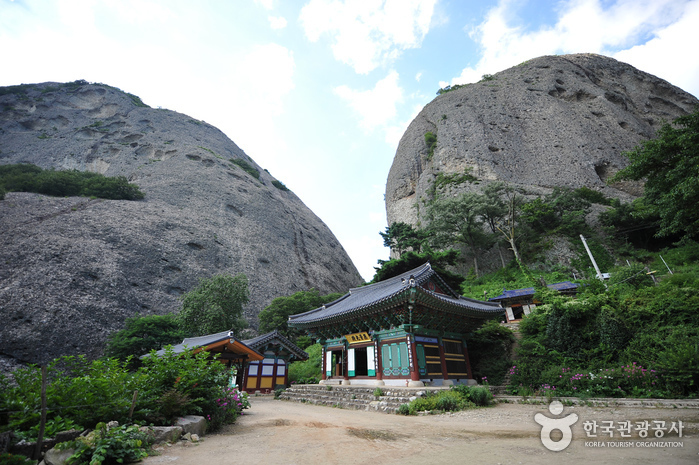
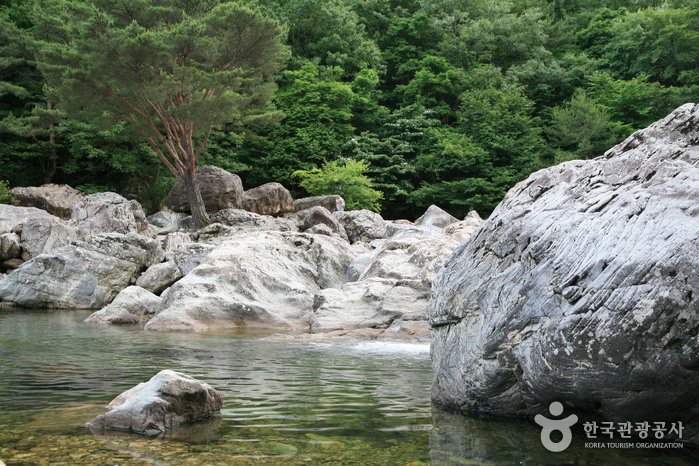
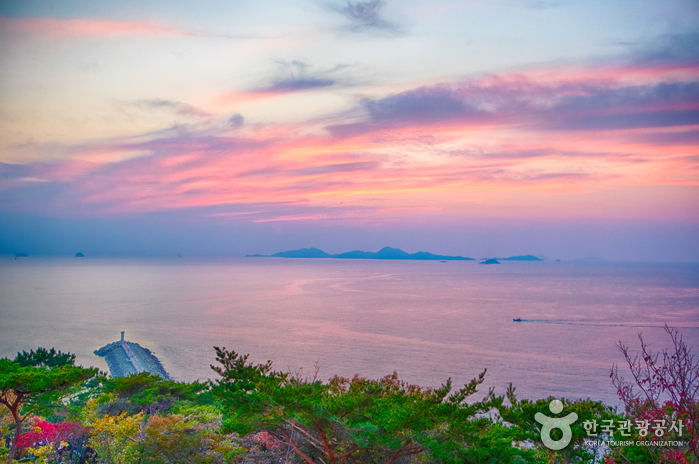
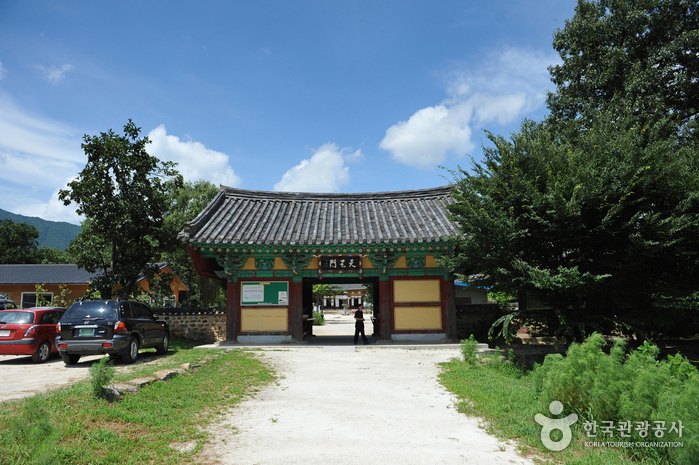
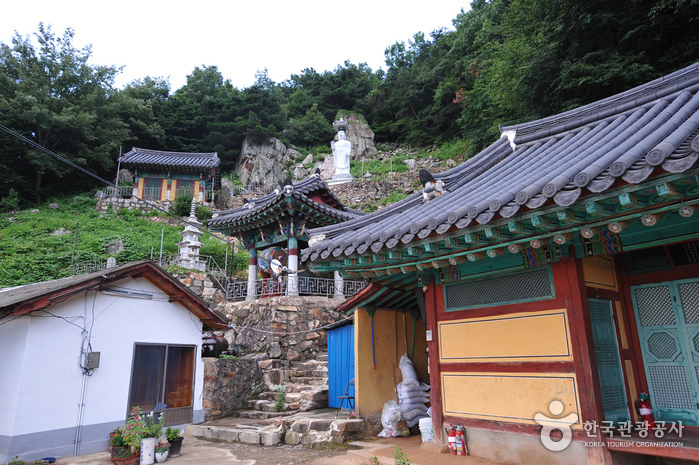
 English
English
 한국어
한국어 日本語
日本語 中文(简体)
中文(简体) Deutsch
Deutsch Français
Français Español
Español Русский
Русский